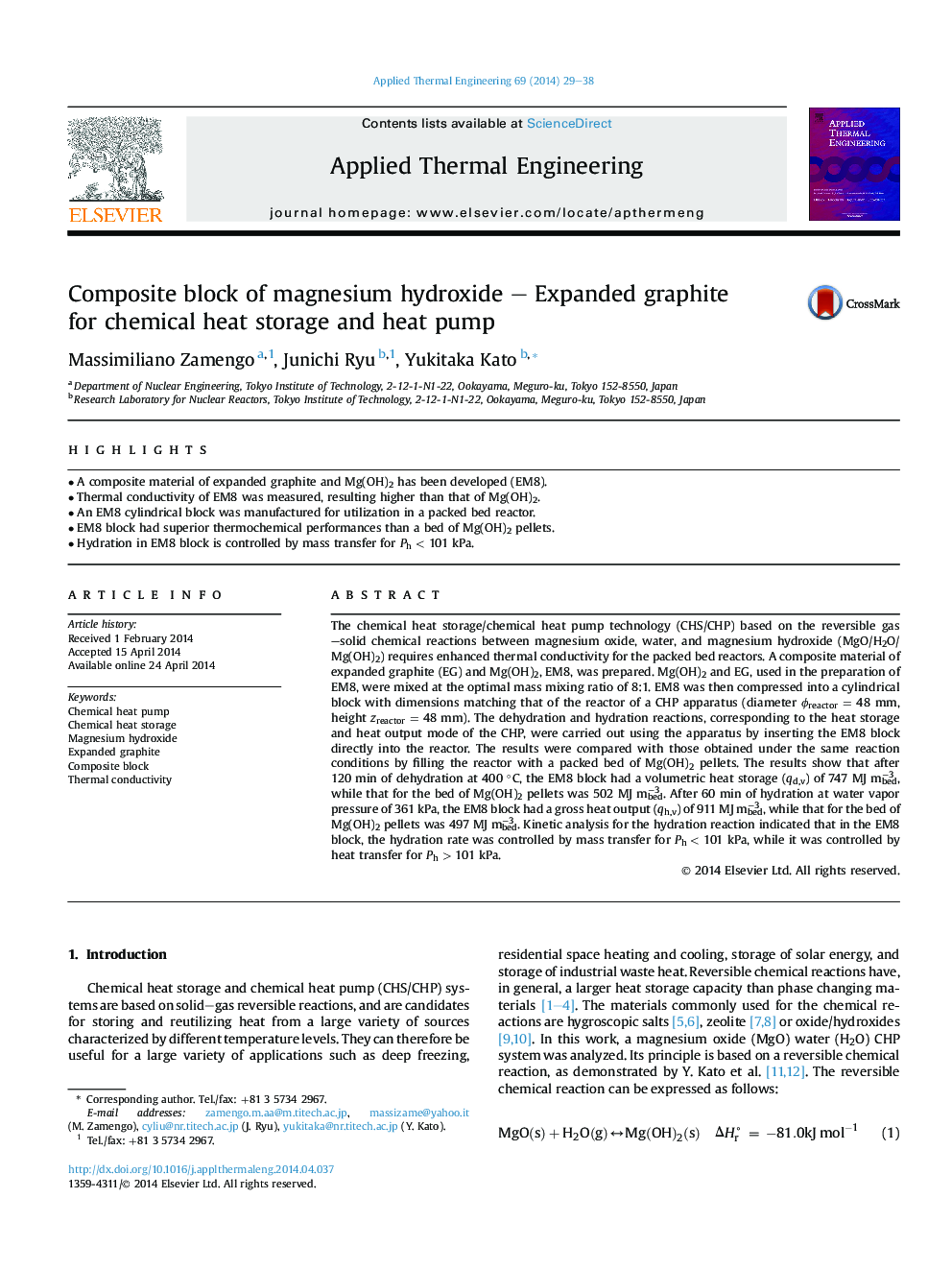| Article ID | Journal | Published Year | Pages | File Type |
|---|---|---|---|---|
| 7049031 | Applied Thermal Engineering | 2014 | 10 Pages |
Abstract
The chemical heat storage/chemical heat pump technology (CHS/CHP) based on the reversible gas-solid chemical reactions between magnesium oxide, water, and magnesium hydroxide (MgO/H2O/Mg(OH)2) requires enhanced thermal conductivity for the packed bed reactors. A composite material of expanded graphite (EG) and Mg(OH)2, EM8, was prepared. Mg(OH)2 and EG, used in the preparation of EM8, were mixed at the optimal mass mixing ratio of 8:1. EM8 was then compressed into a cylindrical block with dimensions matching that of the reactor of a CHP apparatus (diameter Ïreactor = 48 mm, height zreactor = 48 mm). The dehydration and hydration reactions, corresponding to the heat storage and heat output mode of the CHP, were carried out using the apparatus by inserting the EM8 block directly into the reactor. The results were compared with those obtained under the same reaction conditions by filling the reactor with a packed bed of Mg(OH)2 pellets. The results show that after 120 min of dehydration at 400 °C, the EM8 block had a volumetric heat storage (qd,v) of 747 MJ mbedâ3, while that for the bed of Mg(OH)2 pellets was 502 MJ mbedâ3. After 60 min of hydration at water vapor pressure of 361 kPa, the EM8 block had a gross heat output (qh,v) of 911 MJ mbedâ3, while that for the bed of Mg(OH)2 pellets was 497 MJ mbedâ3. Kinetic analysis for the hydration reaction indicated that in the EM8 block, the hydration rate was controlled by mass transfer for Ph < 101 kPa, while it was controlled by heat transfer for Ph > 101 kPa.
Related Topics
Physical Sciences and Engineering
Chemical Engineering
Fluid Flow and Transfer Processes
Authors
Massimiliano Zamengo, Junichi Ryu, Yukitaka Kato,
